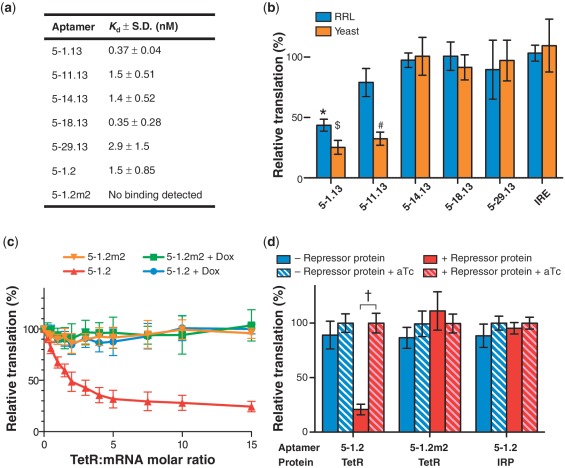Figure 2.
Genetically encoded TetR aptamers enable translational regulation in RRL and in yeast. (a) Aptamers bind TetR with high affinity. The aptamer 5–1.2m2 contains two point mutations that eliminate specific binding to TetR. (b) Only aptamers 5–1.13 and 5–11.13 function to repress translation in RRL in vitro and in yeast in vivo. Relative translation was calculated by dividing FLuc signal in the absence of aTc by FLuc signal in the presence of aTc. (c) TetR dose-dependently represses RRL translation of synthetic FLuc mRNA containing the minimized aptamer 5–1.2, but not the mutant 5–1.2m2. Addition of 1μM Dox completely relieves repression. (d) Inducible expression in yeast requires a functional TetR-binding aptamer and TetR expression. In all figures, data represent the mean ± s.d. of at least four experiments. A two-tailed, unpaired t-test was used to calculate the significance (α = 0.005) of the difference between induced and uninduced conditions. *P = 5.1 × 10−7; $P = 2.0 × 10−7; #P = 4.9 × 10−12 †P = 2.2 × 10−11.

